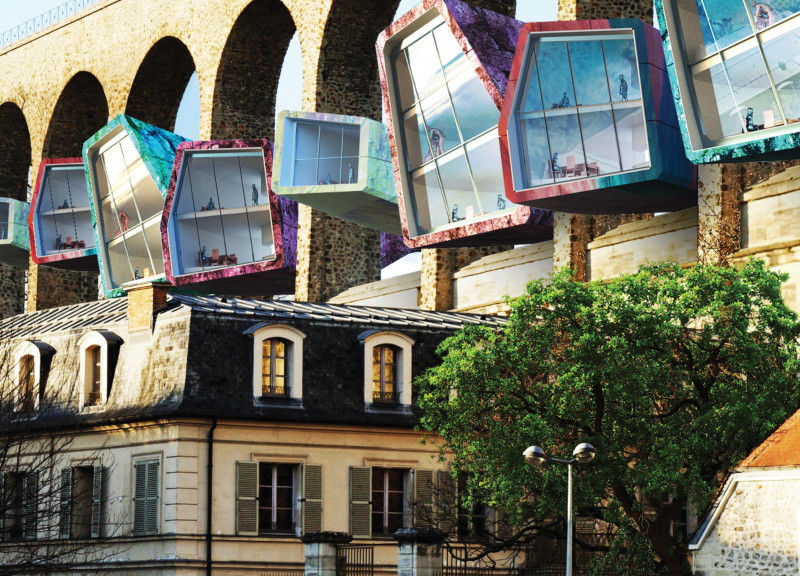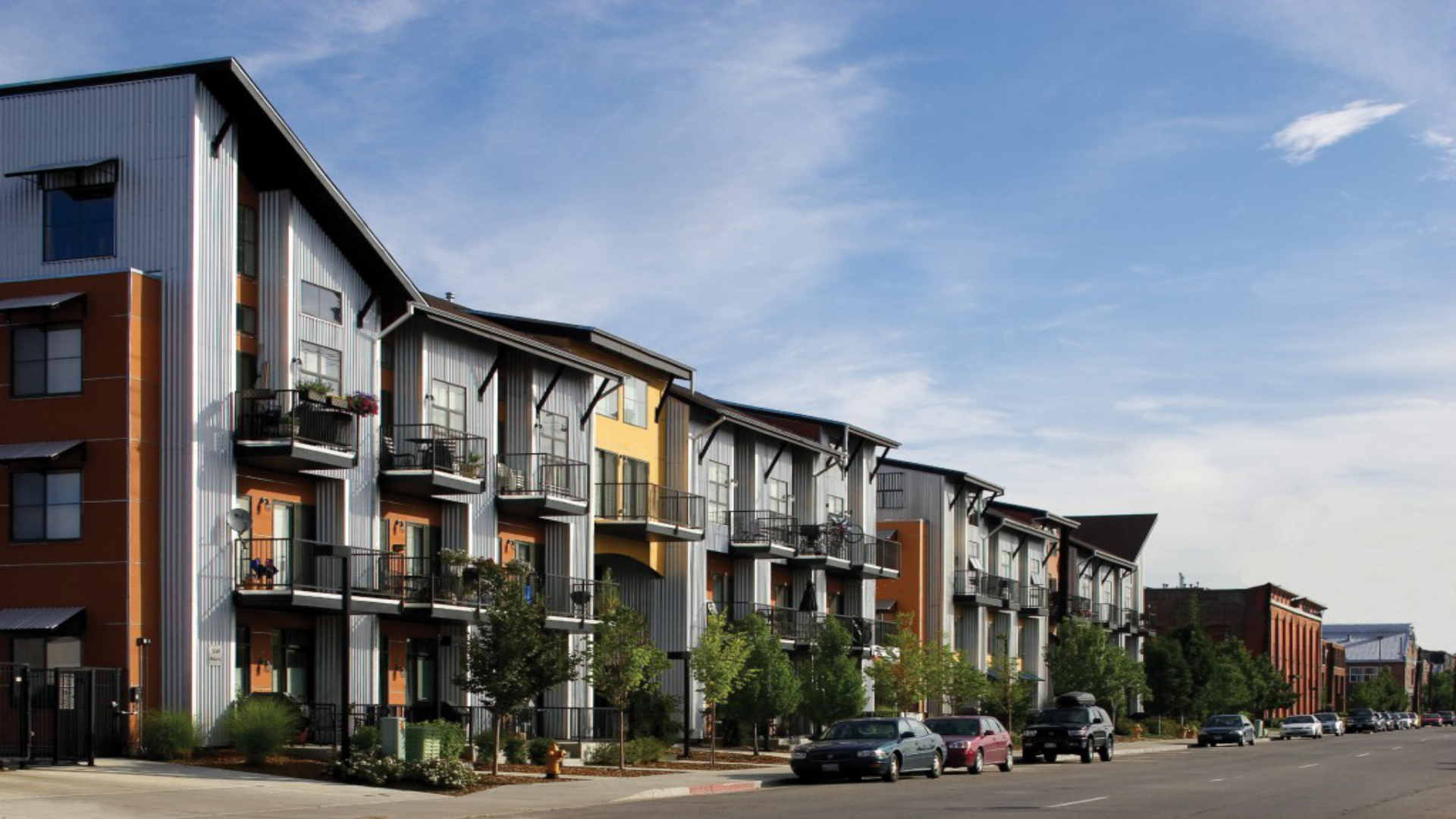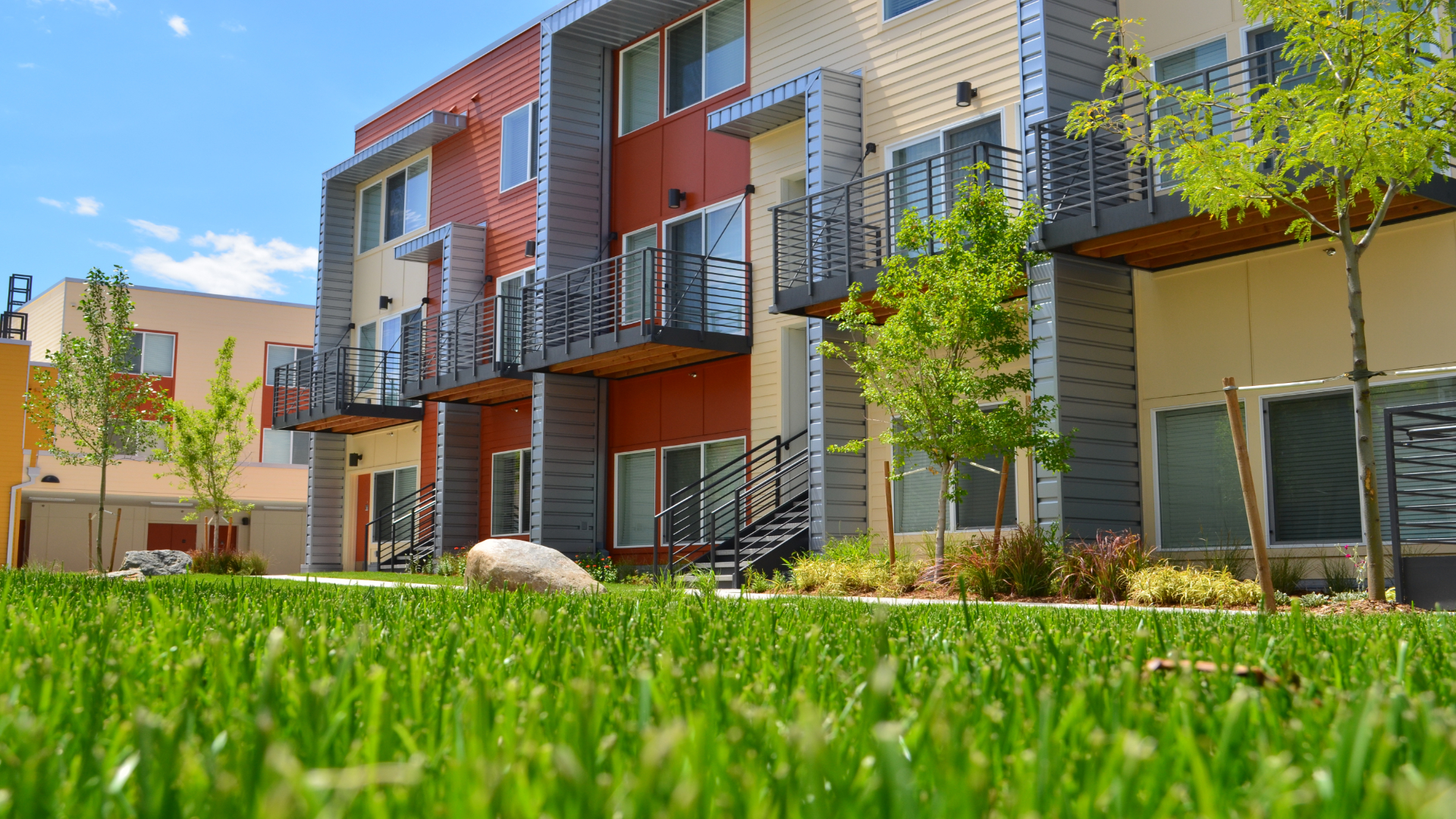5 key facts about this project
The project "Aqueduct Habitation" offers a modern take on the ancient Roman aqueducts, located in Cachan, France, just outside Paris. It addresses the growing need for affordable housing by using the existing aqueduct structure as a framework for living spaces. The design aims to minimize land use while creating a connection between historical context and contemporary needs.
Framework Integration
The core idea involves placing housing units within the arches of the aqueduct. This method eliminates the necessity for new land acquisition and revitalizes a significant historical structure. The design features two types of modules: a five-unit configuration and a four-unit configuration. This approach maximizes the available space while keeping costs low for future residents.
Prefabrication and Assembly
A noteworthy aspect of the project is the use of prefabricated housing modules. These units are produced off-site, allowing for quicker assembly once they arrive. Transportation is handled with trailers, and cranes are used for lifting the modules into place. This strategy minimizes on-site labor and construction time, making it practical for affordable housing development.
Design Variability and Community Interaction
The architectural design presents contrasting appearances on the North and South facades. The South facade extends outward from the arches, creating a lively visual effect. In contrast, the Northern facade adopts a more solid and grounded expression, creating a connection with the street. An elevated walkway links the housing units, enabling movement and fostering social interaction among residents, which strengthens the sense of community.
Aesthetic and Material Considerations
One important detail is the use of highly reflective glass at the ends of the housing units. This feature does not just enhance the visual appeal but also helps blend the new construction with its surroundings. A rigid-body steel frame supports the modules, ensuring structural reliability while requiring minimal maintenance. The design also includes smooth, organic edges that echo the flowing water that once moved through the aqueduct, linking the modern living spaces to their historical origins.























































